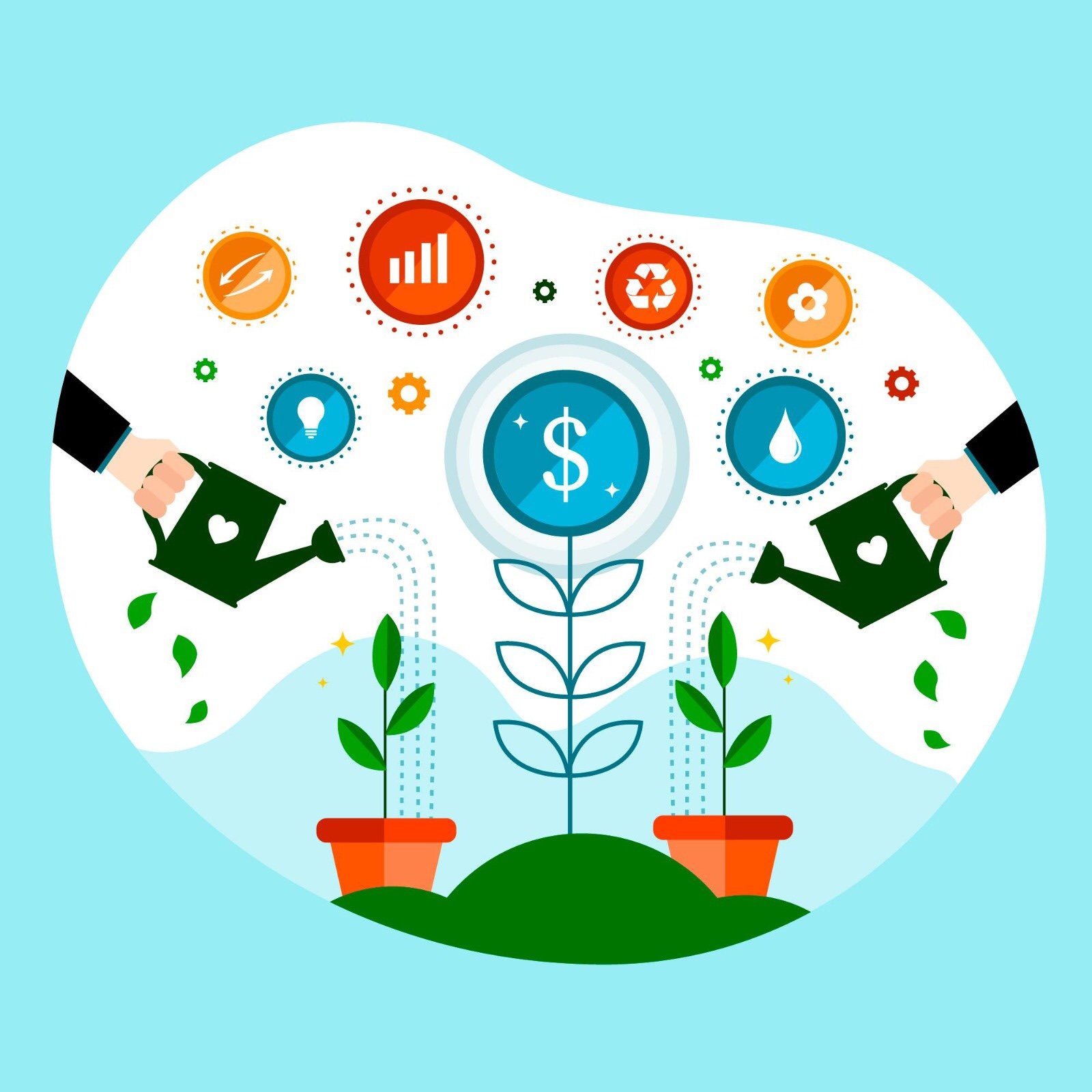As the urgency of environmental challenges intensifies, businesses must embrace sustainable practices to remain competitive. This article explores key green economy trends and actionable steps for companies transitioning towards sustainability while ensuring profitability.
The green economy has moved from a niche concept to a powerful movement transforming global business. As concerns over climate change, resource scarcity, and environmental degradation grow, companies worldwide are taking bold steps to integrate sustainability into their operations. This transition is not just an environmental obligation—it represents a lucrative business opportunity.
Circular Economy: Turning Waste into Wealth
One of the most prominent green trends is the circular economy, a system designed to minimize waste by reusing and recycling resources. In contrast to the traditional linear model where products are made, used, and discarded, the circular economy promotes sustainability through innovation.
How businesses can adapt:
Adopt Circular Models: By focusing on product life extension and refurbishment, companies reduce waste and resource consumption. This approach boosts efficiency and customer loyalty.
Design for Durability: Products that are easy to repair and recycle can save both businesses and consumers long-term costs.
Waste Minimization: Many industries are finding ways to turn waste into a resource. For example, IKEA’s furniture take-back program allows customers to return used furniture, which the company refurbishes and resells.
Renewable Energy: Powering the Future
The shift from fossil fuels to renewable energy sources like solar and wind is a cornerstone of the green economy. With growing concerns about carbon emissions and climate change, businesses must prioritize clean energy to remain sustainable and competitive.
Practical steps:
Invest in On-Site Renewables: Installing solar panels or wind turbines can significantly reduce energy costs while cutting carbon footprints.
Purchase Green Energy: Companies can source clean energy through green power certificates or partnerships with renewable energy providers. Google, for instance, powers its operations entirely with renewable energy.
Energy Audits: Conduct regular audits to pinpoint energy inefficiencies and implement improvements like energy-efficient lighting.
Sustainable Supply Chains: Extending Responsibility
Sustainability doesn’t end at a company’s front door. To truly embrace green practices, businesses must evaluate the environmental impact of their entire supply chain.
Key strategies:
Supplier Audits: Regularly assess suppliers’ sustainability practices to ensure they align with environmental goals.
Ethical Sourcing: Choose eco-friendly materials and processes. Stella McCartney, for instance, sources organic cotton and reduces environmental impact across her brand’s supply chain.
Reduce Emissions: Optimize transportation routes and explore carbon-neutral shipping options to cut down on logistics-related emissions.

Green Finance: Investing in Tomorrow
Sustainable finance is becoming a key driver for businesses committed to green practices. Green bonds, ESG (environmental, social, governance) investments, and sustainable banking offer companies new ways to fund eco-friendly projects.
Financial tools to explore:
Issue Green Bonds: Companies can fund renewable energy projects or eco-friendly building initiatives by issuing green bonds.
ESG Integration: Investors increasingly prioritize companies that meet ESG standards. Aligning business practices with these criteria can attract socially responsible investments.
Sustainable Banking: Partner with financial institutions that offer loans for green initiatives, further facilitating the transition to sustainability.
Eco-Friendly Packaging: Tackling Plastic Pollution
Plastic waste has become a global environmental crisis, and businesses are increasingly adopting sustainable packaging solutions to minimize their impact.
Innovative solutions:
Biodegradable Packaging: Replace plastic with biodegradable materials like cornstarch-based plastics or natural fibers.
Reusable Packaging: Encourage consumers to use refillable containers or adopt deposit return schemes to promote recycling.
Plastic-Free Supply Chains: Eliminate plastic at every stage of production and logistics to reduce your company’s environmental footprint.
Employee Engagement: Building a Sustainable Culture
Building a culture of sustainability is vital for the success of any green initiative. Engaged employees are key drivers of sustainable business practices.
Engagement strategies:
Sustainability Training: Educate employees on the importance of eco-friendly practices and how they can contribute to the company’s environmental goals.
Green Teams: Establish cross-departmental teams to lead sustainability efforts and foster innovation.
Incentives: Reward employees for green ideas and actions, creating a culture of ownership and environmental responsibility.
Innovation in Green Products: Meeting Demand
Businesses that innovate around sustainable products are well-positioned to capture the growing market of environmentally conscious consumers.
Key innovations:
Eco-Friendly Materials: Invest in sustainable materials such as biodegradable plastics or recycled metals.
Life Cycle Assessment (LCA): Evaluate the full environmental impact of a product to guide more sustainable design choices.
Product as a Service: Adopt business models where customers pay for the use of products, encouraging product longevity and reuse. Tesla’s electric vehicles are a great example, reducing reliance on fossil fuels and setting a new standard in the automotive industry.
The green economy is no longer a trend but a fundamental shift in how businesses operate. Companies that adopt circular models, invest in renewable energy, and prioritize sustainable supply chains will not only reduce their environmental impact but also position themselves for long-term success. In a world increasingly focused on sustainability, businesses that lead the way in innovation and green practices will thrive in tomorrow’s marketplace.





